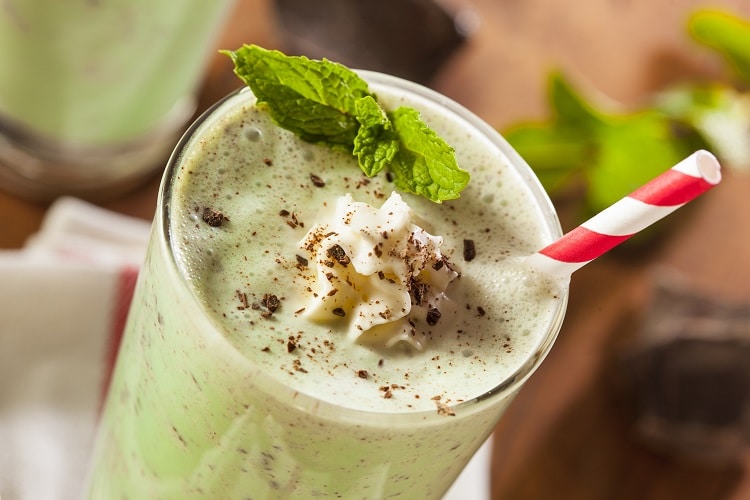Now hold on just a minute. A beer style called barleywine? Well which is it—a beer or a wine? Allow me to alleviate any confusion for you.
History of Barleywine
A barleywine is in fact an ale that was given its title during the 18th century when English Aristocrats grew weary of importing French wine and, lacking the climate to grow grapes of their own, sought to create a table drink fit for a king that matched the nutrition, complexity and alcohol content found in table wines of the time. Since brewing was already widespread in England and malted barley was plentiful, the most skilled of brewers set out to create an ale that was not only suitable for cellaring but also matched the myriad intense flavors of wines that only the most talented of winemakers and brewers could coax out of their ingredients and oak casks. The resulting nectar originally had many titles such as October beer, Dorchester beer and malt wine, but came to be known widely as barleywine by the early 1800s.
Modern-Day Barleywine
Today, barleywines are crafted by many breweries, usually as a seasonal offering between the months of November and March. They range in color from a mild honey or amber all the way up to a deep chestnut or even almost black and the alcohol by volume spans from 8% to 12% and sometimes even higher. Flavors present in the style range from sweet and slightly fruity with caramel and toffee to hoppy, earthy and oaky with any number of subtleties woven in for depth and complexity.
Barleywines almost always have at least a mild boozy quality about the aroma and a long and very warming finish. They can be enjoyed fresh or laid to rest in your beer cellar for weeks, months or even years to develop and enhance qualities that are ever changing. If you think you might prefer a less hoppy, more malty and sweet barleywine with notes of Sherry, toffee and candied fruit then keep an eye out for the English-style barleywines which usually fit that bill.
Top Barleywines on U.S. Market
Examples of the English style include Thomas Hardy`s Ale, J.W. Lee’s Harvest Ale, Alesmith Old Numbskull and Weyerbacher Blithering Idiot. If you fancy a barleywine that is more hoppy and bitter with notes of oak, earthiness and resin atop roasted malt sweetness, choose an American-style barleywine such as Victory Old Horizontal, Sierra Nevada Bigfoot, Anchor Old Foghorn or Stone Old Guardian. Maybe you crave even more depth and complexity?
Keep your eyes peeled for some of the highly sought after barrel-aged barleywines such as Firestone Walker Sucaba, Goose Island Bourbon County Brand Barleywine, North Coast Old Stock Cellar Reserve or Lost Abbey The Angel’s Share aged in Bourbon Barrels.
In My ExBEERience’s Personal Favorites
My personal favorites include Firestone Walker Sucaba, Victory Oak Horizontal (oak aged Old Horizontal) and Steel Toe Lunker (unavailable in PA. Sorry!).
I’m also extremely excited for an upcoming release from local brewing phenom Jean Broillet, owner and brewmaster extraordinaire at Tired Hands Brewing Company. Jean has a barleywine called “Screeching Loud Thrashing Death-Metal Offensive Song” in the works that promises to be no less than a work of art. Partially aged in Tuthilltown Rye Whiskey Barrels, this brew alone will certainly be reason enough to visit Tired Hands if you haven’t made it there already.
Recommended Glassware
Barleywines, given the nature of their huge complexity and high ABV, are sipping beers and can stand alone beautifully on a cold winter’s night. Serve them in a large snifter to allow the aroma to open up so you can experience them in all of their glory.
Top Food Pairings
Barleywines do not have to be served all by their lonesome. They can pair quite nicely with certain foods. If you want to try snacking with your barleywine, try pairing it with figs and a nice blue cheese like Stilton. Roasted meat dishes can sometimes work well with the malt-forward English barleywines but be careful to choose one that isn’t too sweet or boozy as it may dominate the main food course. As for desserts, pair your barleywine with dark chocolate, rum raisin ice cream or a holiday fruit cake (finally a reason to try fruit cake!).
Drink Wisely
Whether you choose to enjoy these deliciously delicate and cleverly complex ales with food or by themselves, be sure to sip slowly and allow them to warm to cellar or room temperature so that all of the subtleties can peek through. Remember that they are a good deal stronger than your average beer and enjoy responsibly. And if you find one that you particularly enjoy, you can drop a bottle off for me at the following address…oh ok fine. Keep it for yourself, your family and your close friends. But when you find your favorite one, keep a few extra bottles and lay them to rest in a cool dark place such as a dry basement closet and try them in the months or years to come so you can experience the difference cellaring can make.
Have a favorite barleywine? Share with us in the comments.
- Weyerbacher & Goose Island Photos: Jeff Giampaolo
- Snifter Glass: True Beer
- Barleywine in Glass: Amy Strauss



